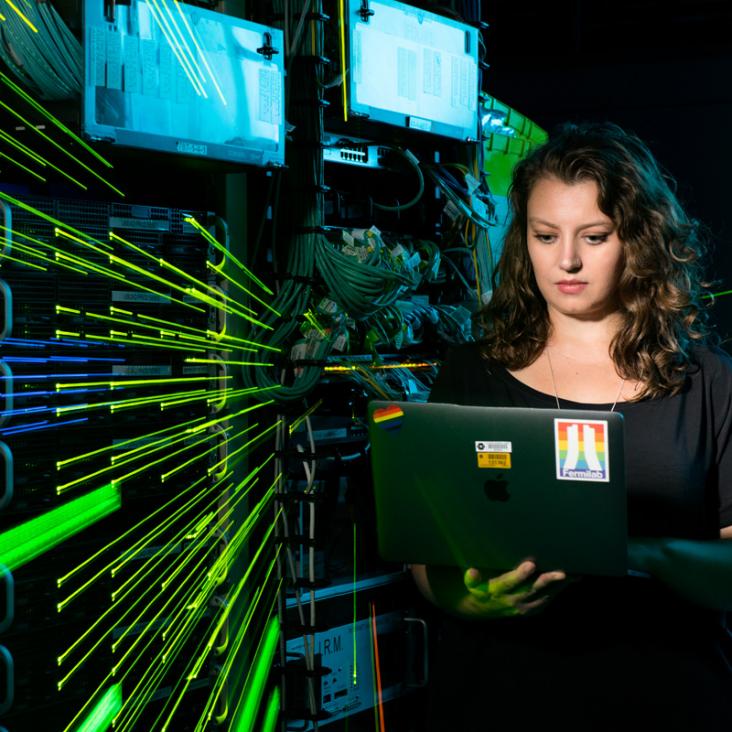Preamble
Chapter in FIRST MEASUREMENT OF NEUTRINO AND ANTINEUTRINO OSCILLATION AT T2K, (2017) 1-3
Measurement of coherent π^{+} production in low energy neutrino-carbon scattering
Physical Review Letters American Physical Society 117:19 (2016) 192501
Abstract:
We report the first measurement of the flux-averaged cross section for charged current coherent πþ production on carbon for neutrino energies less than 1.5 GeV, and with a restriction on the final state phase space volume in the T2K near detector, ND280. Comparisons are made with predictions from the ReinSehgal coherent production model and the model by Alvarez-Ruso et al., the latter representing the first implementation of an instance of the new class of microscopic coherent models in a neutrino interaction Monte Carlo event generator. We observe a clear event excess above background, disagreeing with the null results reported by K2K and SciBooNE in a similar neutrino energy region. The measured flux-averaged cross sections are below those predicted by both the Rein-Sehgal and Alvarez-Ruso et al. models.Measurement of double-differential muon neutrino charged-current interactions on C8H8 without pions in the final state using the T2K off-axis beam
Physical Review D American Physical Society 93:11 (2016) 112012
Abstract:
We report the measurement of muon neutrino charged-current interactions on carbon without pions in the final state at the T2K beam energy using 5.734×1020 protons on target. For the first time the measurement is reported as a flux-integrated, double-differential cross section in muon kinematic variables (cosθμ, pμ), without correcting for events where a pion is produced and then absorbed by final state interactions. Two analyses are performed with different selections, background evaluations and cross-section extraction methods to demonstrate the robustness of the results against biases due to model-dependent assumptions. The measurements compare favorably with recent models which include nucleon-nucleon correlations but, given the present precision, the measurement does not distinguish among the available models. The data also agree with Monte Carlo simulations which use effective parameters that are tuned to external data to describe the nuclear effects. The total cross section in the full phase space is σ=(0.417±0.047(syst)±0.005(stat))×10-38 cm2 nucleon-1 and the cross section integrated in the region of phase space with largest efficiency and best signal-over-background ratio (cosθμ>0.6 and pμ>200 MeV) is σ=(0.202±0.036(syst)±0.003(stat))×10-38 cm2 nucleon-1.First Antineutrino Oscillation Results from T2K
ArXiv 1605.01626 (2016)
Abstract:
As limits improve on the neutrino mixing angles and mass-squared differences, the focus of T2K has shifted towards studying antineutrino oscillation. This will give an insight into CP violation (if P($\bar{\nu}_{\mu} \rightarrow \bar{\nu}_{e}) \neq \mbox{P}(\nu_{\mu} \rightarrow \nu_e)$) and CPT violation (if P($\bar{\nu}_{\mu} \rightarrow \bar{\nu}_{\mu}) \neq \mbox{P}(\nu_{\mu} \rightarrow \nu_{\mu})$) in the lepton sector. This poster summarises the most recent T2K antineutrino oscillation results, from data collected using a $\bar{\nu}_{\mu}$-enhanced neutrino beam corresponding to $4.01 \times 10^{20}$ protons on target (roughly $1/3$ of the total protons on target collected by T2K). We present world-leading measurements of $\Delta \bar{m}^2_{32}$ and $\sin^2\bar{\theta}_{23}$ and the first analysis of $\bar{\nu}_e$ appearance from T2K. Both results use a Bayesian oscillation analysis based on a Markov Chain Monte Carlo method in which data from the near detector and far detector are fit simultaneously.Current status and near future plans for T2K
(2016)


